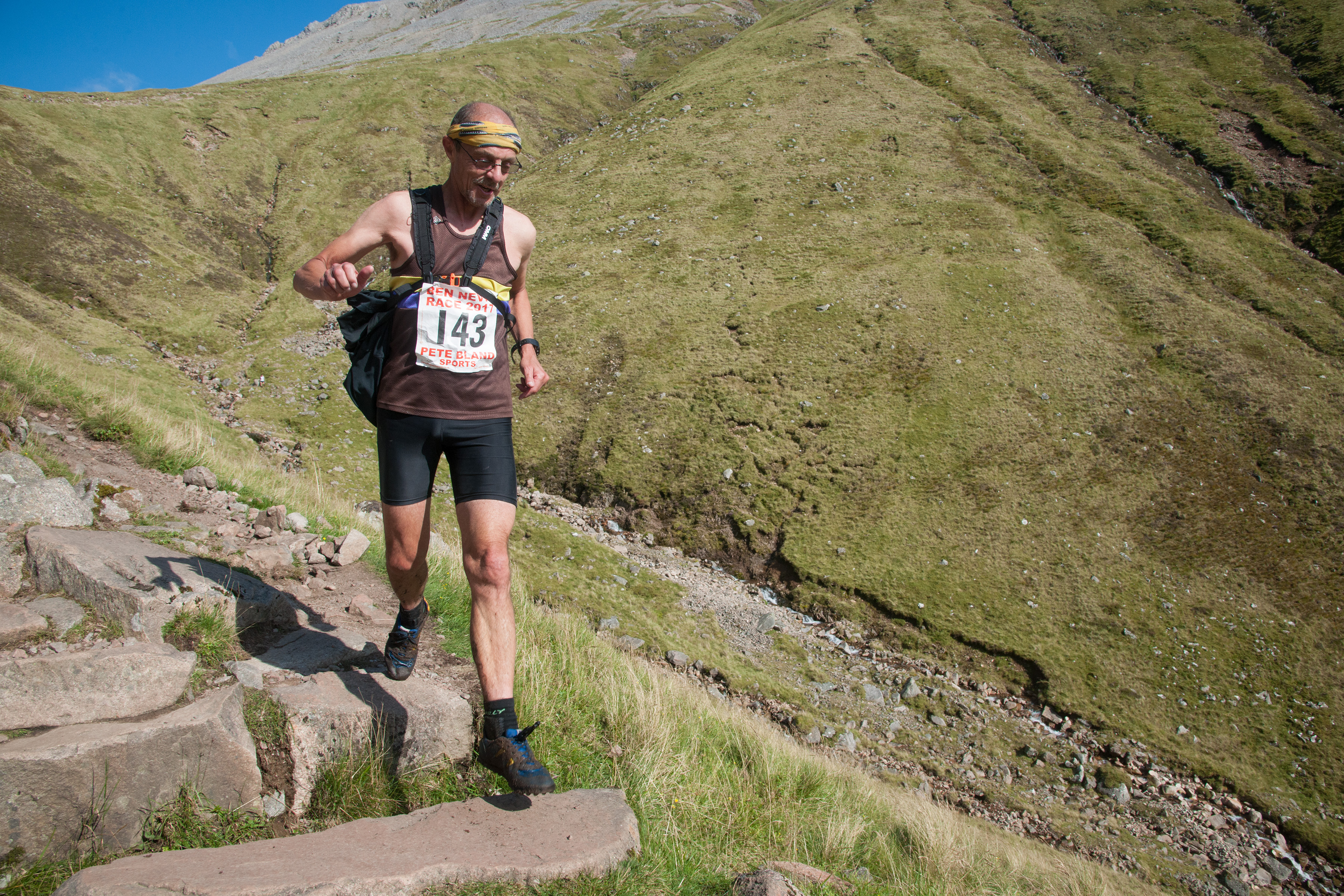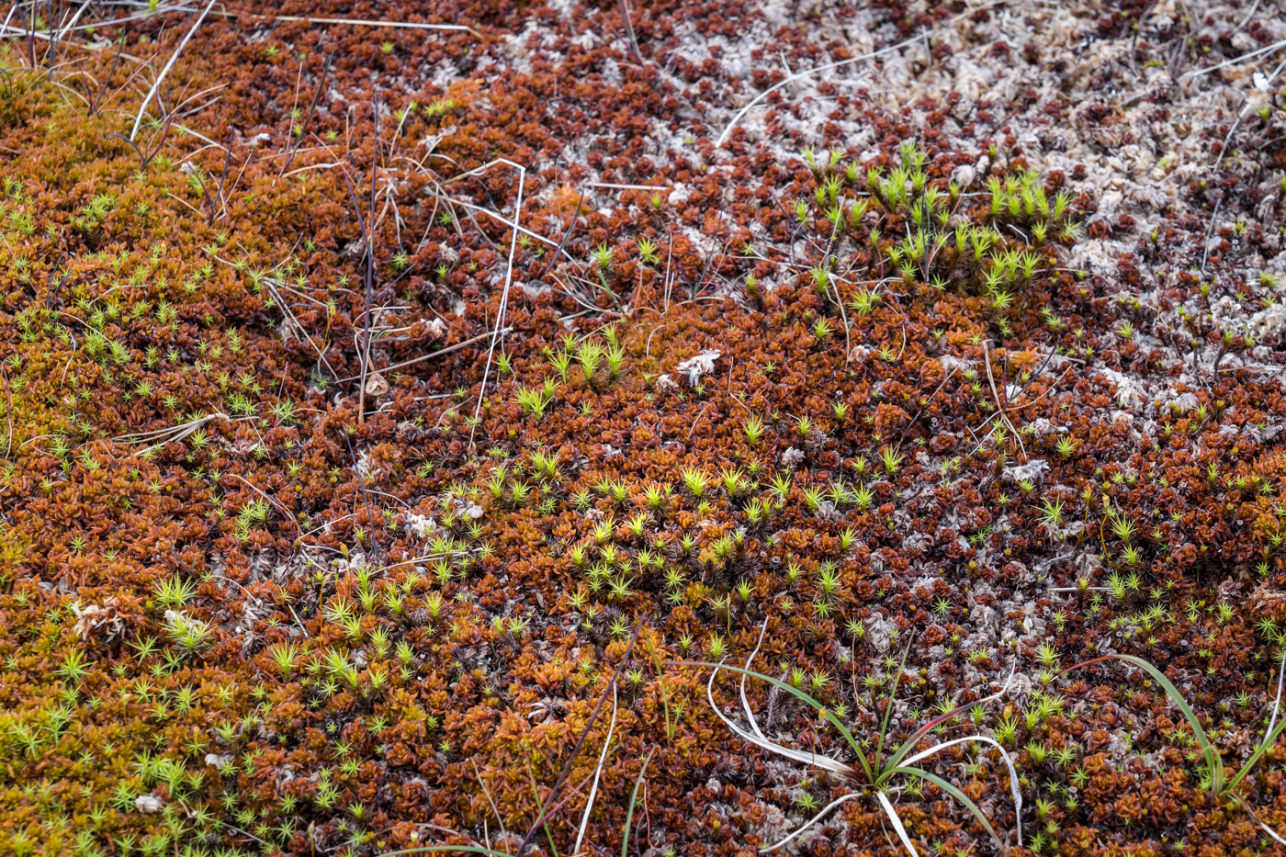My Nevis: Tim Mackey
Helping us celebrate looking after Nevis is fell runner Tim Mackey, who painfully recalls his first Ben Nevis race.

It was about 3.45 in the afternoon and I was having a bad day. I was sliding down scree, upside down and on my back, so cold I couldn’t open my eyes in a 70mph wind in driving, freezing rain. This isn’t the nice scree you can almost slalom down, this was great big nasty chunks of granite that tipped you over the first chance it got. And it did that a lot between the edge of the plateau and the grassy bank.
I also couldn’t believe I was doing this. This was 1988, my first Ben of 13 and the most memorable. In those days the race started at 2pm, it was the 2nd September and the weather was looking ominous. The late start gives you too much time to think about what’s to come as conditions continued to deteriorate at sea level as I tried to find things to do in Fort William. A cup of tea here, a snack there, a short walk down the glen to avoid the plague of programme sellers.
I registered at about 1pm and it was bucketing down, got changed into thermal top, club vest and shorts. Claggan sports field was sodden and most runners were sheltering in the marquees. I heard over the tannoy that it was minus four on the summit with severe windchill. That was enough for me to put another layer on top and leggings plus balaclava. Stuck an extra hat in my bumbag for good measure. I’d experienced bad winter conditions with Karimoors and other winter races like the High Peak Marathon so I wasn’t too concerned, I mean it’s just out of August, how cold can it get? But when I saw some runners in road running gear, just really almost indecent shorts and vest I was certain officials would either advise or pull them out. There were no kit checks in those days and we all gathered for the rather funereal, but moving, parade round the park behind the wailing bagpipes and the drums of doom.
Then we were off. Nearly a mile of road to the foot of the mountain then the climb got steeper and the water just kept on coming. By the time we rounded the bridle path to head up to the cataract of the Red Burn the wind was funnelled up the valley and my cagoule was well and truly on. I enjoyed this bit as it was wind-assisted but it was nothing compared with what was to come. None of the next mile and a half were runnable. It was a case of staying on your feet and keeping the person in front of you on theirs as we scrambled and shoved each other up the scree.
Eventually a new sound was added to the shrieking of the wind as the lead runners came crashing back down, an astonishing sight as they leapt from tumbling rock to rock and you had to get out of their way. The plateau was in reach and the gradient allowed me to do more than just shuffling, but it was impossible to generate any heat and the cold was penetrating. The force of the wind propelled me along the rocky trail to the ruined weather station.
My hands were too cold to hand over the string neckless with my number on it to the marshal, who did it for me. It didn’t look like the poor sod wanted to be there any more than I did - by now it was just get the hell off this mountain as quick as you can before you die. Cold muscles don’t work very well, I couldn’t feel any of my limbs and now the freezing rain was in my face and I could hardly see. My staying alive plan was to follow the runner in front, so long as they didn’t plunge to their doom down the terrifying gullies of death two yards on the right. When descending you have to try and avoid the ascending runners, but it was every man for himself.
I saw one runner screaming with his hands over his ears, he had no head cover, he was still climbing though, that’s my boy. I tried to tell him it was worse higher up, but my face muscles wouldn’t work. He must have thought I was mad, I knew he was. I thought I’d gone blind at one point, but it was just my sodden woolly hat that flopped down over my face, so I skidded and slipped downwards on my back picking up knocks, cuts and bruises on the way.
Then somehow or other I found myself 2000 feet lower and on the top of the eroded grassy bank short cut (no longer used) which is 500 feet of pure hell as my braking muscles protested every unforgiving inch, grown men weep on this section as there’s no give in the surface. Over the raging Red Burn, then at last back to the bridlepath and a chance to do some running and get warmed up. Hands started to thaw out and I suffered the agonising hot aches but who cares, I’m off the worst bit, though the short cuts on the zigzags were quite a challenge. Eventually hit the jelly legs section of the road which was like being on another planet and 10 mins later staggered through the mud round the race track in the park 2hrs 21 mins after I’d left it.
I don’t know how cold it got in the wind chill, but I’ve done minus 10-15 and this was far worse. I’ve never experienced anything like it since. It was said that it was worse than the abandoned race of 1980 and the worst conditions for 30 years. Two helicopters were used to get 16 runners off the mountain, who were hospitalised with hypothermia and head injuries and it was reported eight were within half an hour of death.
The aftermath was that it changed the rules. I came the following year and we had to carry full body cover, emergency rations and were checked. It’s worth remembering that fell runners are basically semi-trained anarchists, who won’t do what they’re told and definitely don’t make many concessions to anything, especially the weather. A few contrarians complained and dumped their survival gear outside the park.
As a means of contrast I next did it in 1996 in 30 degrees C, that was a tough day as well. It's always a tough day. And as for when I head butted the Ben in 2010, that’s another story.
- Read about our Nevis 25 appeal and Nevis 25 celebrations.
- Inspired to submit your own Ben Nevis story? Email us.
- Find out more about our work at Nevis.
Photo shows Tim descending the Ben in 2017.
